Space Zoology - Fruit Flies and Tardigrades
By Dr Caitlin Fisher
 The humble fruit fly (source: NASA - https://www.nasa.gov/mission_pages/station/research/news/AFEx)
The humble fruit fly (source: NASA - https://www.nasa.gov/mission_pages/station/research/news/AFEx)
When I was a child, I loved astronomy. I knew my planets (poor, poor Pluto), had glow-in-the-dark stars stuck on the bedroom ceiling and pretended I could see the Milky Way from our backyard. However I was shocked when I learned how fit an astronaut’s body had to be to withstand the high g-forces as the rocket ship took off into space as well as the harsh conditions on the spacecraft. I reluctantly rethought my career plans as an astronaut.
Luckily, I had a back-up plan - to collect lots of animals and have my own zoo.
While my career path has diverged from my childhood expectations (only a little), I had learned that my two favourite subjects could potentially be combined into one: animals in space! It turns out that animals had been sent to space more than a decade before the first cosmonaut Yuri Gagarin did in 1961. Remember those high g-forces that astronauts have to cope with? Human astronauts were not the first ones to do so - they sent non-human animals into outer space to see how well their bodies coped with the journey.
The first living things to leave the Earth’s atmosphere were fruit flies in 1947. Fruit flies are excellent test subjects for experiments because they share 77% of their genes with human beings! What that means is that, if you split half a strand of human DNA with half a piece of fruit fly DNA and compared them, 77% of the DNA would be the same! That is a lot to share in common with a tiny, flying insect - that might explain why bananas are so delicious! Fruit flies have continued to be frequent fliers into space. In May 2011, a live “Spider Cam” showed a fruit fly being captured by another space-dweller on the International Space Station, Esmerelda, a golden orb spider. In 2014, fruit flies were sent into space again to see whether zero gravity and other space conditions put stress on the fruit flies’ hearts and if they could stay healthy!
To stop fruit flies from stealing all the limelight, all sorts of other animals have been into outer space including mice, dogs, monkeys, rabbits, cats, guinea pigs, frogs, wasps, cockroaches, beetles, worms, newts and tortoises! But the weirdest creatures by far to have been flown up into space are the very mysterious tardigrades, or “water bears”. Only reaching a size of 0.5mm, these caterpillar-looking moss-eating animals can survive extreme temperatures, pressures, radiation, and dry conditions in all sorts of environments, and have even survived in the cold vacuum of space!
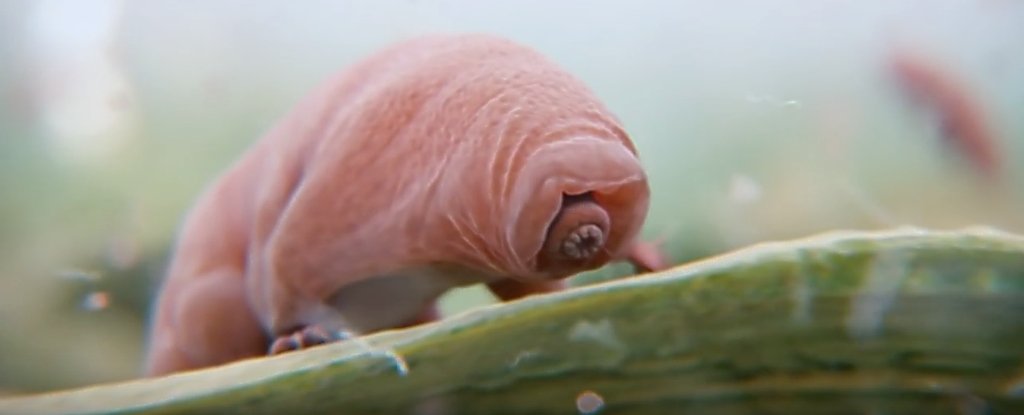 A tardigrade (source: Science Alert - http://www.sciencealert.com/we-finally-have-footage-of-tardigrade-mating-and-it-s-even-weirder-than-expected)
A tardigrade (source: Science Alert - http://www.sciencealert.com/we-finally-have-footage-of-tardigrade-mating-and-it-s-even-weirder-than-expected)
So it seems that my ultimate goal of having a Space Zoo is not too far away after all! I can’t wait until they have the first bird in space to see how it would fly in zero gravity, or the first school of fish swimming between big droplets of water floating in the air! Or my favourite animal of all ... the hippopotamus!
If you found yourself wanting to know more about animal astronauts, fruit flies or tardigrades, here are some great places to start!
- “The History of Animals in Space” - a great pictorial summary of the variety of animals that have been sent into space
http://www.space.com/20648-animals-in-space-history-infographic.html - “NASA’s Next ‘Top Model,’ The Fruit Fly” - NASA explains why fruit flies are great subjects to study
https://www.nasa.gov/mission_pages/station/research/news/fruit_fly - “Buzzing With Activity: Fruit Flies Orbit Earth for Science” - NASA’s program to study heart stress in space
http://www.spaceflightinsider.com/missions/iss/fruit-flies-iss-show-spaceflights-effects-heart/ - “Scientists Finally Figured Out Why Tardigrades Are So Indestructible” - a great overview of how tardigrade bodies react to harsh environments
https://www.gizmodo.com.au/2016/09/scientists-finally-figured-out-why-tardigrades-are-so-indestructible/
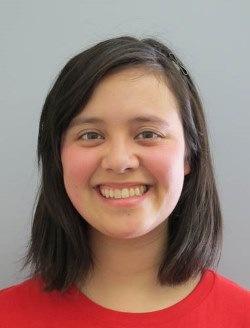 Caitlin is an astronomy enthusiast from Sydney, Australia and volunteer for Astronomers Without Borders. She obtained her PhD in Physics from the University of Sydney studying how light could be used to make faster and more energy-efficient computers. Her favourite hobby is to tell people fun science facts. Her second favourite hobby is eating chocolate and singing a cappella.
Caitlin is an astronomy enthusiast from Sydney, Australia and volunteer for Astronomers Without Borders. She obtained her PhD in Physics from the University of Sydney studying how light could be used to make faster and more energy-efficient computers. Her favourite hobby is to tell people fun science facts. Her second favourite hobby is eating chocolate and singing a cappella.
Global Astronomy Month in Spain
By Victoriano Canales Cerdá
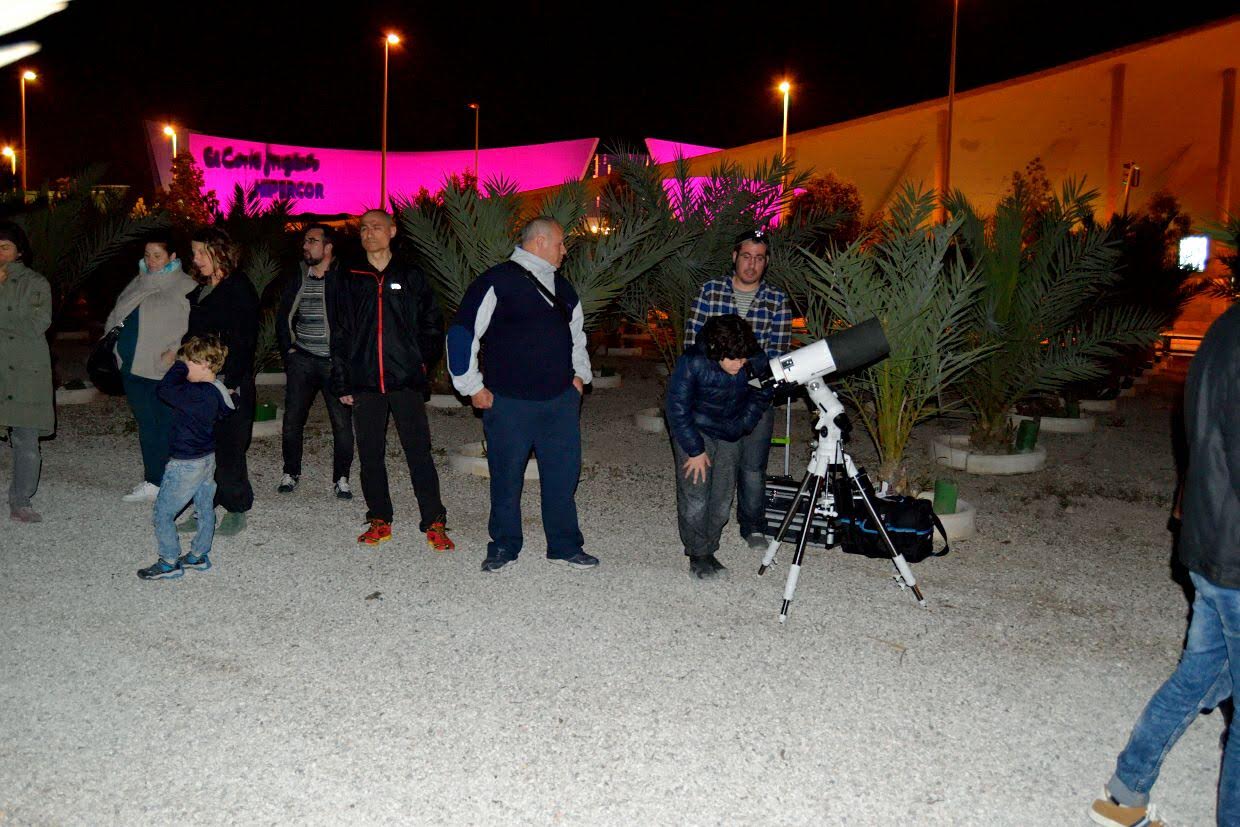 Observation of the Moon
Observation of the Moon
Spain is dressed as a gala at this year's Global Astronomy Month (GAM). Not many activities have been done, but they have been overwhelming. Ciudad Real, Alicante, Huesca, Malaga, Seville and Palencia were the provinces that presented the most activities.
The inaugural Star Party was used to make the Marathon Messier between partners and a special activity for the general public. Different lectures and workshops on astronomy were held during the week.
In the second weekend, the Moon was the protagonist in various associations, performing activities for their observation and photography. During this second week there were no activities during the week.
The third weekend was festive throughout the country and the main protagonists were the beaches. During this third week there was movement during the week, continued to take courses in astronomy, astrophotography workshops and conferences.
The fourth weekend was reserved for the observation of the Líridas and a second Marathon Messier. At the end of observational practical activities, Sunday was the last day of the Sun's observations. During the fourth week, 'End of the Month' activities were continued with round tables, end of courses, astrophotography workshops and charitable activities.
 Astronomy in classrooms
Astronomy in classrooms
It has been my first GAM as CN for Spain. I have a positive and a negative note: the good thing is that there were no obstacles to publicize the activities that have been generated during this month and the negative thing has been to know how to take the GAM better, making the entities use the GAM logo and some more things. For my part it has been a good experience.
 Victoriano Canales Cerdá is an amateur astronomer who began his career in the world of astronomy in 1990 at the age of 14, although he took my first steps in school thanks to his natural teacher Jose Luis. He studied electronics and computer science, nothing to do with astronomy in the beginning, but this was a pathway for him to discover the world of radio astronomy. He built a small radio telescope of 1.2 meters and was able to measure Earth-Moon distance several times, and hear the impacts of Comet Shoemaker-Levy-9 on Jupiter (in July 1994).
Victoriano Canales Cerdá is an amateur astronomer who began his career in the world of astronomy in 1990 at the age of 14, although he took my first steps in school thanks to his natural teacher Jose Luis. He studied electronics and computer science, nothing to do with astronomy in the beginning, but this was a pathway for him to discover the world of radio astronomy. He built a small radio telescope of 1.2 meters and was able to measure Earth-Moon distance several times, and hear the impacts of Comet Shoemaker-Levy-9 on Jupiter (in July 1994).
He withdrew from radio astronomy because of the complexity it entailed, and he threw himself into direct telescope observations, which was when he discovered the true Universe. From then on he began to study all the books of astronomy that fell into his hands, took courses in astronomy, and attended all relevant lectures, workshops, etc.
He now shares his knowledge and passion of astronomy, by visiting schools and institutes, participating in radio programs, and carrying out outreach activities in the Study and Dissemination Astronomical Observatory Group of Elche "AstroGEDA"; he has also been a chair of this committee since it was founded in June 2012.
He holds positions at the national level as Coordinator of Astronomers Without Borders in Spain and a member of the Federation of Astronomical Associations of Spain "FAAE". He’s also a member of The Meteorical Society and IMO (International Meteor Organization) and has been involved in the recovery of fallen or found meteorites, mainly in the province of Alicante, for the ICE-CSIC, in addition to participating in online programs for the search for potentially dangerous asteroids and NEOs.
Hoax & Misconception in Astronomy, a Never Ending Story?
By Avivah Yamani
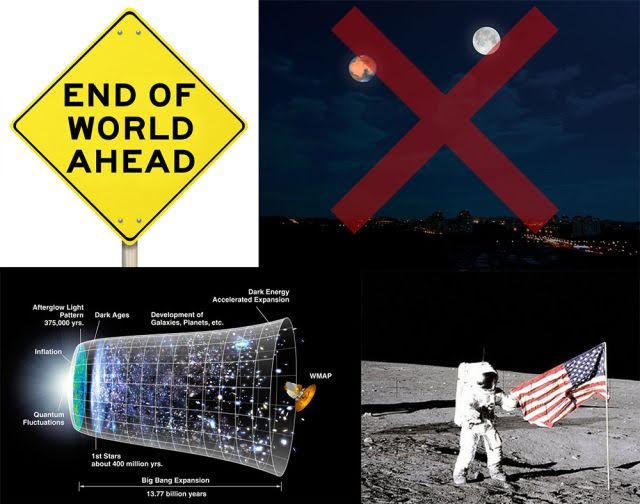
Hoax… Is it a new trend…or failure of education system? Well I don’t have an exact answer to that. But I always think of it as a lack of basic science in our society in Indonesia. Political situation in Indonesia also shares the evidence that people were easily fall into hoax news. It is also the case in astronomy.
In 2003, we encounter Mars hoax for the first time. This issue circulated by email and claimed that Mars would look as big as the full Moon to the naked eye on August 27, 2003. People easily fall into this issue. Curiosity arose and people visited the observatory, planetarium, and public places where astronomy community conducts public viewing. Several telescope were damage in Jakarta Planetarium while in other places, it was the longest queue we ever seen. The hoax has since resurfaced every year from 2005 through 2016. And I hope we won’t see it in the near future…but I guess…we will need to write the same story again and again to counter this issue.
In 2006, we had another issue here. A book has been published as an evidence of geocentric idea. The Sun goes round the Earth and our beloved Earth stands still. It was hot debate in many mailing list and online forum. This misconception is still recurring, and in our point of view, this is all because of the lack of basic science.
This 2 events, along with the lack of astronomy media and transit Venus events in 2004, became the reason to start a new astronomy blog. Our purpose was to share astronomy information as well as educating public in astronomy. In short, we want to build astronomy awareness among Indonesian public. In our new blog which we name langitselatan or Southern Sky, we also counter astronomy hoax.
Once we started the blog, we encounter people who want to know more about the Moon Landing hoax. So it became another popular story in our site.
Started in 2009, the upcoming release of 2012 movies drag people to believe that the world was come to an end. The 2012 doomsdays issue started. And I’m sure this one became hot issue everywhere in this blue planet. It was in Indonesia. The peak was in 2012 when the Mayan Calendar end its long calendar. Our statistics shows that public interest on astronomy get its peak in 2012 and most of our reader looking for 2012 doomsday issue including nibiru, planet alignment, and solar cycle. Another false story in 2012 was Betelguese will explode as supernova and its explosion will affect the Earth.
Ok... lets move to another hoax. We also encounter the most frequent question from our reader and this issue gets its spot in several mainstream media here. “The Universe shaped like a trumpet”. And public related this issue to their faith.
In 2014 and 2015, another story of the end of the world reappeared. This time, the tetrad lunar eclipse became the suspect for blood moon prophecy. Not just the lunar eclipse. The Total Solar Eclipse in 2015 was also famous for this end of the world prophecy.
In 2016… We were once again encounter the same issue regarding total solar eclipse. We had many false beliefs toward the eclipse. And the most famous issue in 2016 aside than Total Solar Eclipse was flat earth issue, many people fall into this issue. Many of them believe that they have been deceived by global organization about this and that all scientific results were fake. And again as usual, public relate this issue with faith. There were hot debates everywhere, especially in social media. Several organization and astronomy community organize a discussion about this issue and mainstream media outlet pick this issue as one of their hot news.
In 2017… we still have this flat earth society. And it looks like this issue won’t end anytime soon. But we also have other false issue. Misinformation about perigee and equinox leads people to believe that the earth temperature especially Indonesia will increases very high and we will have heat wave.

Sad but true… hoax or fake news usually gain more interest from public. Public usually interested on how to observe the event or what’s the relation with their life. Hoax generates instant curiosity among public. People talk about the astronomy issues and looking for the answers.
False issue like this can be destructive but it can also be a good opportunity to introduce astronomy to the public. This is why we need to communicate science in every way through every channel.
2017 is the 10th anniversary for our online media. Aside than hoax, public do looking for astronomy news, information and events such meteor shower, eclipse and etc. But still, hoax received more attention from public. And sometime it is the easiest way to talk about astronomy to the lay people.
 Avivah Yamani is an astronomy communicator from Indonesia. She is a co-founder of langitselatan, an astronomy online media and a Project Director of 365 Days of Astronomy.
Avivah Yamani is an astronomy communicator from Indonesia. She is a co-founder of langitselatan, an astronomy online media and a Project Director of 365 Days of Astronomy.
To Be One is To Be All
By Borahan Aydoğmuş
“There's a single light of science, and to brighten it anywhere is to brighten it everywhere.” - Isaac Asimov
As humans since our existence we gazed upon the stars. We referred the celestials as gods once. We gave them different characters and different names and always thought how far they are. Now we realize that they are like Earth, objects in space. They are not more special then us nor we are more special then them. But we forget that even though we all share a pale blue dot, we are not as close to each other as we are to the stars.
Astronomy is the oldest one of the natural sciences. The oldest astronomer as we know is Aristarchus of Samos (c. 310 – c. 230 BC), with the first solar system model. Then came scientists like Copernicus, Galileo, John Michell, and Isaac Newton. They were scientist of different times and different places and still throughout history, all of the scientists like them, even when they are in different cultures, different languages, different ideas they communicated with science. Wherever you go in this small yet so big planet of ours, everyone you met can speak the language of science. Science is a global pulpit for us.
We can communicate by science; we can overcome our prejudice with science. We used to teach astronomy to kings, sultans, pharaohs, so that the strongest person in that country understands our place in the universe. And now, we are not giving it the credit it deserves. Every horror and apocalyptic movie starts with a scientist being ignored. We have one Earth and we are destroying it, just because we are not giving enough importance to science, and by doing that we are destroying ourselves.
Since I became the president of HUAST, I realized that we could stop discriminating ourselves, separating one from other because everyone I met until now wanted to know something about our planet, our sun, and our universe. We sometimes forget how joyful it is to listen and learn science from experts. We forget how enjoyable it is to do science. Each one of us has questions and we want them to be answered. Be it a four years old child or a sixty years old person. We all are humans so we all want to know.
We are halfway to achieve our mission, One People One Sky. We already have one sky. The rest is only being one people. By joining AWB, we started to be more unitive towards enthusiast from Turkey to be one, and so far we are, with one step at a time, successful.
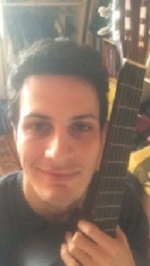 Borahan Aydoğmuş is 21 years old, living in Ankara/Turkey because he is studying Applied Physics/Physics Engineering at Hacettepe University. He is in charge of Hacettepe University Astronomical Society, current representative and coordinator of AWB for Turkey.
Borahan Aydoğmuş is 21 years old, living in Ankara/Turkey because he is studying Applied Physics/Physics Engineering at Hacettepe University. He is in charge of Hacettepe University Astronomical Society, current representative and coordinator of AWB for Turkey.
"As a young scientist I believe the idea and mission of AWB can make a big change, a good one at that, for us humans. For that cause I am giving educational seminars about various subjects to various people in order to share science and learn science with them."
A Day in the Life of an Astronomer…
By Kimberly Cullen
When ever I get asked “So Kim, what do you do?” I generally say “I’m an astronomer (or astrophysicist if I want to sound super smart or theoretical astrophysicist if I really want to take someone down a peg) by trade and now I work as a science communicator”. Usually at this point I get asked “What’s a science communicator?” which is something we can get into another time… What I want to talk about is what an astronomer does on a day to day basis.
What do you think about when you think of what an astronomer does every day? Take some time here to daydream. What did you come up with? Most people who are not involved in the industry (yes, astronomy is an industry) usually imagine someone sitting up all night every night looking through telescopes. Spoiler alert: This is not the case.
There are two major “fields” or “areas of study” in astronomy – you’re either an “observational” astronomer where you get to use telescopes (optical, radio, gamma, etc) to collect data or a “theoretical” astronomer where you get to use amazing computers (called super computers) to run simulations of how the universe, galaxies, etc are formed, evolve, die etc. Within each of these there are of course intricacies and subcategories however today I’m going to keep it this broad.
Each of these areas of study have their own idiosyncrasies and neither one involves looking through a telescope each and every night – not even observational astronomers are “observing” all the time. In fact theoretical astronomers almost never use telescopes. On a daily basis, astronomers spend most of their time doing one of two things – analysing the data they’ve collected or researching what is happening and being discovered in their niche area of astronomy by reading other astronomers published papers.
An observational astronomer who has been granted “telescope time” (time to use the telescope to collect data or information) may only be given a few days or so to use the telescope to gather data. This means travel to some exotic locations Chile, Hawaii, Parkes! Not necessarily, these days “remote observing” is becoming more and more prevalent. This means that you can login to the telescope and do your observing from the comfort of your own office.
Hint: If you don’t want to have to worry too much about the weather either don’t do research that uses light (as you can’t observe during the day or if the weather is not good), use a space based telescope or be a theoretical astronomer.
A theoretical astronomer generally doesn’t use a telescope at all. Similar to an observer, a theoretical astronomer can be granted “computing time” (time to use the super computer to run simulations) however this too is limited.
Note: Observational and theoretical astronomers work together to explain the universe – an observer observes what’s there and a theoretician tries to simulate how what is seen came to be using maths, physics and lots of computing power. When it doesn’t match up then it’s back to the drawing board for one or both to figure out what’s going on.
A lot of an astronomers time is spent in front of their computer analysing the data that they’ve collected, either from telescope or computing time. The vast amounts of data that has been collected needs to be analysed. The “raw” data often contains far too much information to clearly see any patterns without looking at it in a different way. This analysis requires time for the raw data to be analysed using different software packages. In some cases, the astronomer needs to create new or amend current programs to read and present the data in a way that is useful for what they want to do with the data.
Most of the rest of the time an astronomer needs to keep up with the research being conducted by other researchers in their particular area of astronomy. This is so that when new discoveries are made they can be referenced, used as a basis for their research, etc and to make sure that the one massive discovery that they’re working on doesn’t get published by someone else first!
Whilst astronomy may not be the “glamourous” profession you may have initially thought, the discoveries that are made definitely are. Astronomers look into the face of the universe and attempt to explain how and where it all came from.
Who can say that isn’t glamourous…
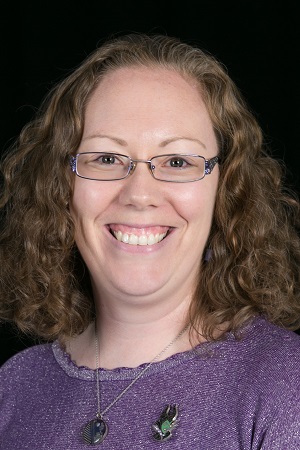 Kimberly's "trade" is physics and astrophysics however she has been working and volunteering in Science Communication for over 10 years. Her science communication background is in Performance Science Communication having held several roles where she would present science shows to school groups and the general public. She currently works at the University Technology Sydney.
Kimberly's "trade" is physics and astrophysics however she has been working and volunteering in Science Communication for over 10 years. Her science communication background is in Performance Science Communication having held several roles where she would present science shows to school groups and the general public. She currently works at the University Technology Sydney.
Exciting young people about science and science careers is Kimberly's passion shown by her consistent involvement with in the Science Communication industry. As well as this, Kimberly has a passion for supporting early career Science Communicators and in order to do this at ground level she has recently taking on the mammoth role of President of the NSW Branch of the Australian Science Communicators which is currently undergoing a rebirth after being inactive for the last few years.





